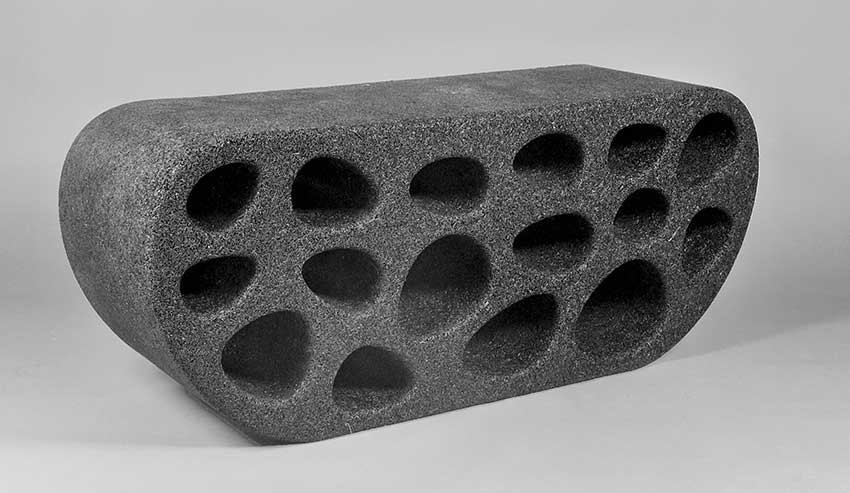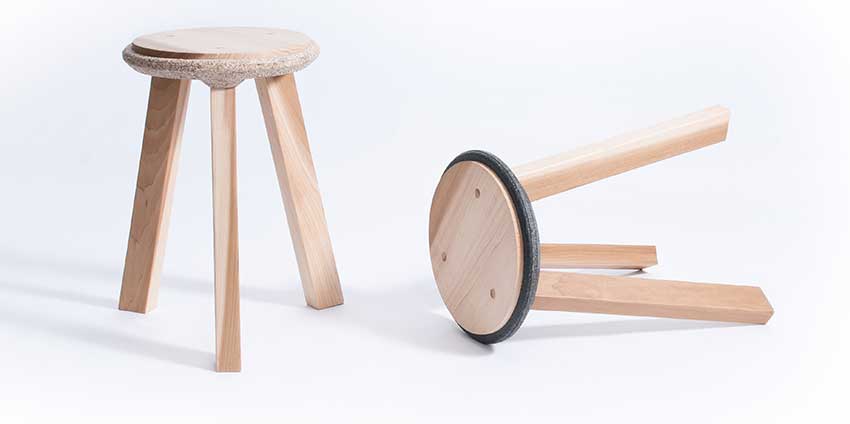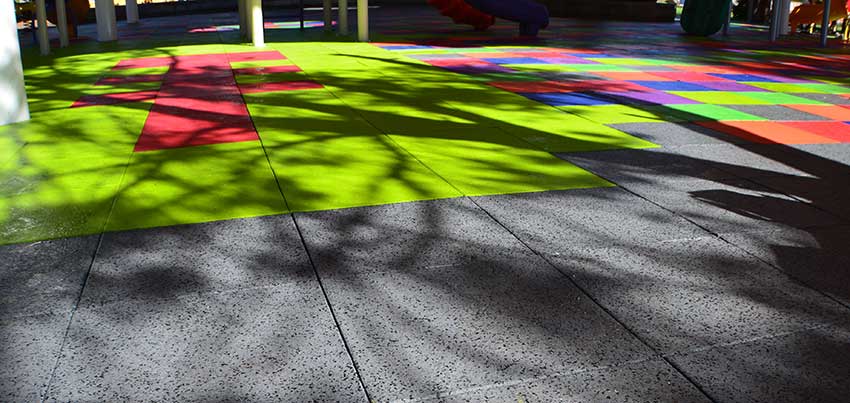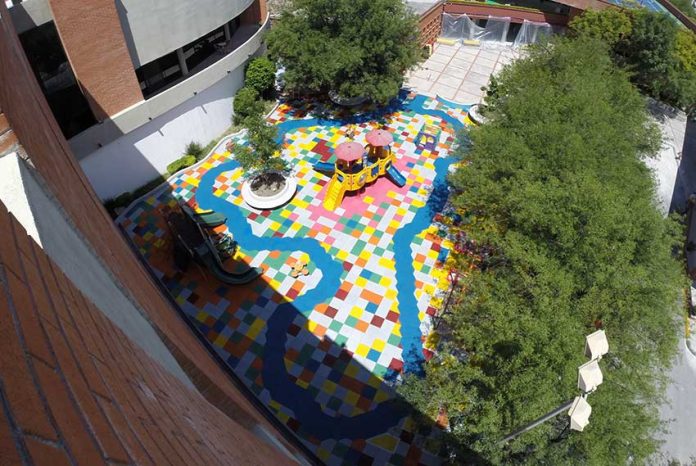For designer Alejandro Curi Chávez, a great design must necessarily be both sustainable and intuitive. If it isn’t immediately obvious how the design should be used or if sustainability hasn’t been considered, then for Curi it is not a great design.
Looking at his work, which is produced under his brand Guma, it seems to tick both these boxes. His designs are sustainable due to the use of recycled materials and the chairs, benches and playgrounds he produces are certainly intuitive for users.
A good design requires that “you don’t tell [the user] anything and they use it correctly,” Curi told Mexico News Daily.
His benches made from recycled tires may not look like your regular bench — with their rounded edges and oval-shaped holes throughout — but everyone would certainly know that they are for sitting on. Perhaps it is something to do with the slight incline in the top of the bench that lets you know that it is there for your sitting pleasure. These are the subtleties of design that good designers think of to make the use of the object intuitive.
The original idea for his work using old tires and now plastics surged when he was still immersed in his design degree. He was given the chance to participate in a project called Cross Pollination at FIT (Fashion Institute of Technology) in New York. He and other fashion designers and engineers developed the idea for a machine that would convert an old tire into the sole of a traditional huarache sandal.

The concept was that these machines would be placed in marginalized communities in Mexico and that anyone could use them. It would be a way to recycle as well as provide new shoes at a low cost.
While this idea was created midway through his degree, it stayed with Curi.
“I thought, I am going to do something with this,” he said, and now Guma has made a name for itself in the sustainable design world, exhibiting pieces internationally in London at Mexico Design Time and in Dubai at Dubai Design Week.
Curi now collaborates with a number of different fashion and design labels for his unique combination of recycled tires and a new secret technology that blends waste plastic to solve design problems or create unique and new products.
Taking his work almost full circle, a collaboration with Mexico-based shoe designer Oveja Calzado will see sustainable footwear with soles made from his recycled materials hit the runways at Mexico’s Fashion Week.
He has also collaborated with another designer, Taller Nu, to create social change. He has produced multicolored soles using his recycled tire and plastics blend for some of their footwear products, a collaboration that has resulted in a beautiful and unique shoe that has a positive environmental impact.

In addition to footwear, his recycled blend has also been used for furniture such as wooden stools with a plastic rim to make them more comfortable and make them stand out from other stools.
Most notably, however, he has created children’s playgrounds across Mexico that, unlike many playgrounds in the country that have hard concrete flooring, provide a cushioned landing for the children. His colorful floors are not only more aesthetically appealing but they are far safer. The special blend he creates also has a waterproof top layer unlike many cushioned tiles for children, so they can be wiped clean and can resist the elements.
Talking to Curi it is clear very quickly that he is a technical designer. Developing technologies and thinking in new ways about design is his focus. Aesthetics still play a role for him, of course, but the technology and creating something new and unique from recycled materials is where his interest appears to lie. The technology and the blend that Guma creates is unique.
“The objective was to recycle tires and now I am recycling other plastics,” said Curi talking about his secret plastic blend. “I have a new technology developed, but it isn’t something that I sell, it is something that I have to make piece by piece.”
The bottom layer of his floor tiles is made from shredded tires and the top layer is the innovative technology that uses other waste plastic that would otherwise be thrown away by the factories producing it. Instead, it makes a colorful and waterproof coating for the tiles.
“The starting point is responsible design,” explained Curi, talking about how we need to “break paradigms and stop using virgin materials” and reuse materials instead.

“The problem is that in Mexico, in contrast to places like Colombia and Canada among others, the government pays to shred tires,” Curi said.
So used tires are being bought in bulk by companies in China that ship them to Chinese shores, shred them and then sell them back to Mexico. Curi finds the unsustainability of this practice hard to comprehend.
“After understanding this, [my] idea was to start to create a demand for this product and this material so that a recycling plant can exist here in Mexico.”
As part of his work, Curi understands that he has to convince consumers that they want this material rather than something new. He sees that as his job as a designer — to “create new trends” and to produce something that is aesthetically pleasing as well as useful from these recycled materials. By doing this, customers no longer feel that they have to forgo style when picking the more environmentally friendly option.
While he sees some limitations, or perhaps struggles in the design world in Mexico, he seems optimistic about Mexican design in general.
“It is growing a lot and I think [the Mexican design world] is making a lot of modern proposals looking for solutions that we really need right now. It is not just about designing for the aesthetic, there are also a lot of really good, socially responsible ideas [coming out of Mexico].”
Since 2018 saw Mexico City named the Design Capital of the Year, with a focus on sustainable design, it is very likely that we are going to see more and more emphasis on these types of designs that either help protect our natural resources or reuse materials to reduce the amount of waste that our planet is amassing.
With this, and with consumers becoming more conscious in their choices, designers like Curi are undoubtedly going to play an important role in guiding design in this more sustainable direction in Mexico and beyond in the years to come.
• To find out more about Guma, check out the website and follow on Instagram.
Susannah Rigg is a freelance writer and Mexico specialist based in Mexico City. Her work has been published by BBC Travel, Condé Nast Traveler, CNN Travel and The Independent UK among others. Find out more about Susannah on her website.
